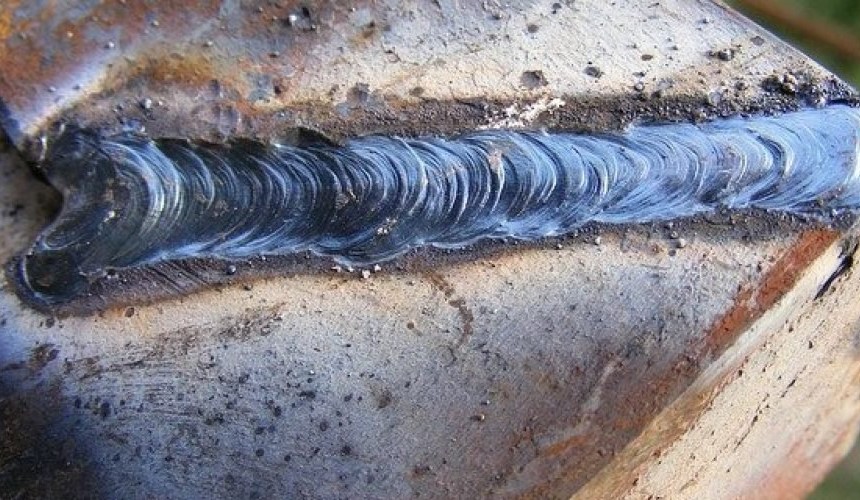Your Full Manual to Preventing Weld Undercut Like a Pro
Your Full Manual to Preventing Weld Undercut Like a Pro
Blog Article
Recognizing the Causes and Solutions for Undercut Welding in Steel Manufacture Procedures
In the world of steel manufacture procedures, the event of undercut welding postures a significant challenge that requires a thorough understanding of its causes and feasible options. The complex interplay of different elements during welding operations can bring about this unwanted phenomenon, influencing the architectural honesty and general high quality of the welded joints - Preventing weld undercut. By dissecting the origin creates of undercut welding and checking out efficient remedial measures, producers can boost the criterion of their workmanship and make certain the production of perfect metal components
Usual Reasons of Undercut Welding
Often ignored in steel manufacture, undercut welding takes place due to various elements that demand meticulous interest and knowledge to be properly minimized. In addition, improper welding techniques, such as using the wrong welding angle or travel rate, can additionally add to damage development. The selection of welding criteria, such as voltage, existing, and cord feed rate, plays a considerable function in the occurrence of undercut welding.
Impact of Incorrect Welding Parameters
Incorrect welding parameters can considerably compromise the integrity and quality of bonded joints in steel manufacture procedures. The effect of wrong welding specifications manifests in different ways, leading to structural weaknesses and flaws in the bonded components. One essential aspect influenced by inappropriate welding parameters is the infiltration deepness of the weld. Not enough warmth input because of low welding currents or exceedingly high traveling speeds can result in poor combination between the base metals, resulting in incomplete joint infiltration and deteriorated bonds. On the other hand, excessive warmth input triggered by high welding currents or slow traveling speeds can lead to extreme and burn-through reinforcement, creating a brittle and unpredictable weld structure. In addition, inaccurate parameters such as incorrect voltage settings or wrong electrode angles can add to erratic weld grain profiles, absence of fusion, and raised possibilities of issues like undercutting. Therefore, meticulous interest to welding parameters is vital to guarantee the manufacturing of premium welds with the wanted mechanical buildings and structural honesty.
Impact of Improper Torch Angle
Incorrect torch angle in welding procedures can substantially affect the quality and integrity of the last weld joints in steel construction processes. Damaging is an usual welding flaw where a groove develops along the weld toe, damaging the joint and jeopardizing its structural stability.
A lantern angle that is also high can result in insufficient infiltration, insufficient blend, and boosted spatter. On the various other hand, a torch angle that is too shallow can cause extreme infiltration, burn-through, and distortion of the base material. Preventing weld undercut. Appropriate lantern angle is essential for ensuring consistent weld top quality, stamina, and look
To avoid undercutting and various other defects Recommended Site brought on by improper torch angles, welders should be educated to preserve the correct lantern angle throughout the welding process. Normal tracking and adjustment of lantern angles during welding can aid achieve audio welds with minimal issues.
Function of Inadequate Welding Strategies

Another aspect of inadequate welding strategies is inappropriate weld preparation. Inadequate cleaning of the base steels, wrong joint layout, or inadequate edge preparation can all contribute to damage welding. In addition, poor protecting gas protection or utilizing the wrong sort of gas article source can cause insufficient combination and the formation of undercut issues.
To address the role of poor welding methods in metal manufacture procedures, it is vital to offer comprehensive training for welders. Correct education on welding parameters, joint preparation, and securing gas choice can help protect against undercut welding and make sure top quality welds in steel construction projects.
Efficient Solutions for Undercut Welding
Dealing with undercut welding in steel construction calls for executing reliable remedies to boost weld top quality and structural honesty. One of the key services to battle undercut is to change welding criteria such as voltage, current, and take a trip speed to ensure appropriate heat input and combination. By fine-tuning these setups, welders can avoid extreme melting of the base steel and filler material, lowering the likelihood of undercut development.
In addition, proper joint prep work is crucial in stopping undercut. Ensuring clean base metal surface areas without pollutants and making use of the appropriate bevel angle can assist advertise far better weld infiltration and decrease the danger of undercut - Preventing weld undercut. Using ideal welding methods, such as oscillating the torch or weaving, can likewise help in dispersing warmth evenly and filling the weld joint appropriately, minimizing the possibility of undercut problems
Moreover, choosing the right welding consumables, consisting of electrodes and filler steels, is essential in mitigating undercut. Using materials with why not find out more suitable chemical structures and mechanical properties can add to achieving sound welds with minimal undercut. Regular inspection and quality assurance steps ought to likewise be executed to discover and deal with undercut problems quickly, guaranteeing the total stability of produced metal parts.

Verdict
In verdict, recognizing the causes and services for undercut welding in metal manufacture procedures is vital for accomplishing premium welds. By dealing with common reasons such as wrong welding criteria, inappropriate torch angle, and poor welding strategies, welders can stop undercutting and make certain solid, resilient welds. It is important to take note of these variables and carry out effective remedies to enhance the overall welding procedure and last product top quality.

Report this page